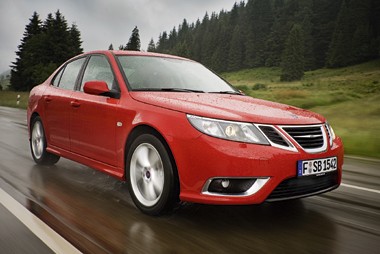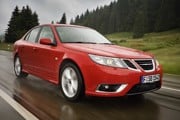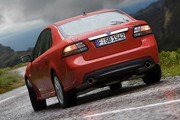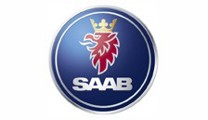Review
Don’t you think Aero is a great name for a car? It’s evocative and implies performance and dynamism without being so obvious as to shout ‘Sport’ from its badging.
It certainly suits the slightly understated nature of Saab very well and is an appropriate name for the flagship 9-3 model.
And the twin-turbocharged diesel engine under the bonnet of the Aero certainly lives up to the ethos. The 1.9-litre TTiD unit offers 180bhp and nearly 300lb-ft of torque, which all adds up to make the Aero a real flier (sorry!).
Until recently this engine was only available in top Aero trim, but it is now being rolled out in lower-spec versions. And this is a very good thing because the TTiD unit is a real gem.
It is powerful, refined and economical, and makes an ideal companion for a sports saloon (or, in the 9-3’s case, estate or convertible).
And with premium rivals such as Audi and BMW offering higher-powered diesels, it is a welcome addition to the Saab line up.
But with the majority of drivers in this sector wanting a sporty look to show off to their neighbours, the engine is most at home in the Aero.
In terms of car park cred, the Aero looks the part with 18-inch alloy wheels, chunky bodykit and fat twin exhaust pipes at the rear. It’s just muscular enough to differentiate it from a stock 9-3, but not too flashy.
Inside are heavily-bolstered sports seats which grip you well. However, they won’t adjust enough – the lowest height setting is still too high and as a result you feel as though you are sitting on top of the car rather than it in.
This is the only real gripe in the cabin – the rest is neat and logical and certainly an improvement on the previous generation 9-3.
On the road the Aero really impresses. The ride strikes a decent balance between comfort and solidity, the steering feel is good and the gearbox shifts positively. The handling is solid and secure with the front-end giving you plenty of confidence.
During my test of the Aero I covered hundreds of miles, most of them on two long-distance journeys, and the Saab was a great companion. Gobbling up the miles is this car’s forte and even after three hours behind the wheel I stepped out feeling fresh.
The Aero also impresses on paper, with a front-end price which easily undercuts its sporting rivals.
And it is also very well equipped. Heated seats, cruise control, parking sensors, climate control and leather seats are standard equipment on the Aero, which adds up to a very tempting package.
But the Aero has a tough fight in this sector, so how does it compare...?
Strengths
Front-end price
Equipment level
Driving experience
Improved interior
Weaknesses
High seating position
Low RV prediction
Three rivals to consider
Audi A4 2.0 TDI 170 S line
BMW 320d M Sport
Mercedes-Benz C220 CDI Sport
P11D price
The Saab is the cheapest, most powerful and best equipped and undercuts the Audi by £130. The 9-3 offers cruise control, climate control, heated leather seats and 18-inch wheels as standard. The Audi and Mercedes-Benz lag behind the BMW on standard equipment.
Emissions and tax rates
The BMW has a healthy lead in emissions, but its higher front-end price means it is not the cheapest in BIK tax terms. It will cost a 40% taxpayer £171 a month, compared to £170 for the Audi. The Saab will cost the same driver £178 a month and the C220 CDI £216 a month.
SMR cost
The BMW will be the cheapest in SMR terms thanks to having 17-inch alloys and variable servicing intervals. The Saab performs well, despite having 18-inch wheels and fixed 18,000-mile intervals, which reflects cheaper labour rates. The Audi and Mercedes-Benz both offer variable servicing intervals.
Fuel cost
The BMW records a claimed average of 58.9mpg, resulting in a diesel spend of £5,900 over 60,000 miles. The Audi is the closest to it on 53.3mpg but will cost nearly £1,000 more in diesel over the same period. The Saab returns 50.4mpg and the Mercedes-Benz 47.9mpg.
Depreciation cost
The Audi pulls quite an advantage here. CAP estimates it will be worth £10,800 in three years and 60,000 miles’ time, equating to a retained value of 40%. The C220 retains 38%, the BMW is marked down to 36% while the Saab is out of contention with a 27% RV.
Wholelife cost
The Audi wins thanks mainly to its performance in the depreciation section and undercuts the BMW by two pence per mile. The C-Class is a another penny per mile further back while the Saab is well adrift thanks to its much lower residual value prediction.
Verdict
The figures all stack up in favour of the Audi here – it offers drivers the lowest benefit-in-kind tax bills and is the cheapest for a company to run. The new A4 is also a much better car to drive than its predecessor, helping it to offer a far more tempting package to drivers than before.
The BMW is still the best car to drive, but its residuals have taken something of a hit recently which has impacted on wholelife costs. And its previous class-leading BIK proposition has been undermined by the new Audi. Tax bills and running costs do for the Mercedes-Benz, while the Saab’s challenge is stymied by the 9-3’s low residual value prediction.


















